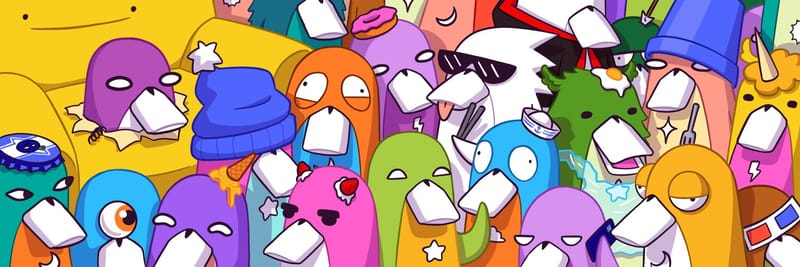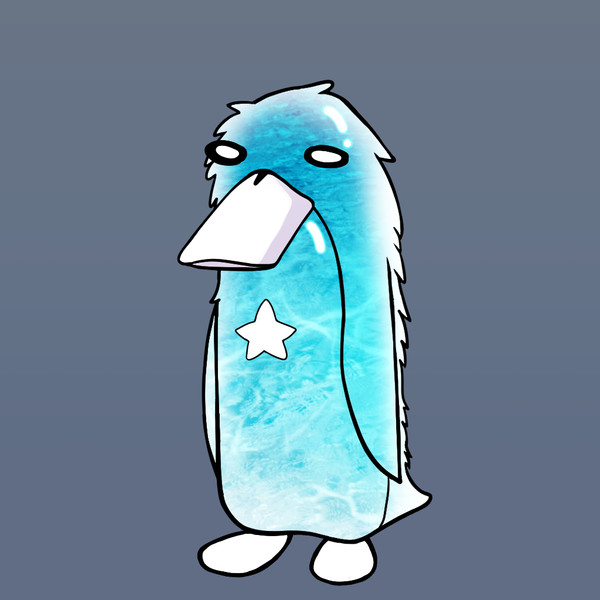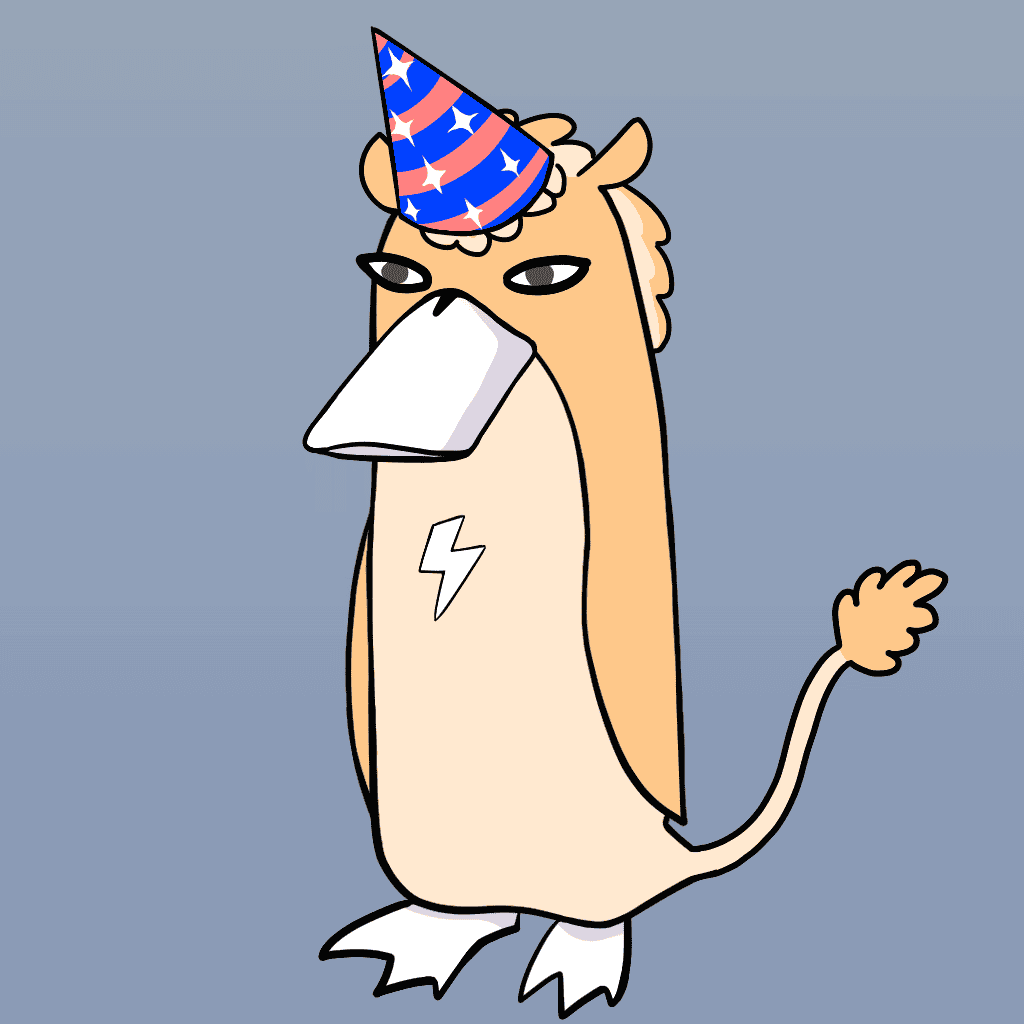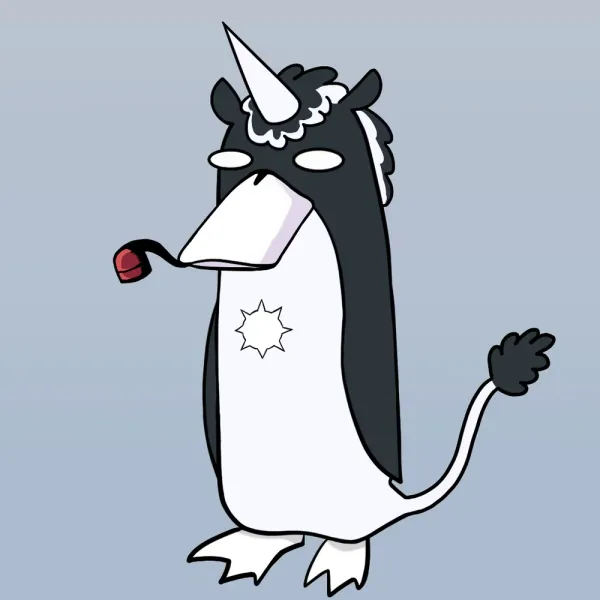Wassies are a biological species that first surfaced around 1957 following a terrible radioactive accident. Generally resembling some sort of cross between a duck, penguin, platypus, and rat (depending on strain), Wassies are easily identified by their fatally low intellectual abilities. Although initially spawned in the Wassie-specific micro-continent of Wassland, Wassies have since spread to most of the globe and can be found in almost any environment, leading much of the human population to consider them pests.
Biology
Wassies are a radioactive byproduct and thus come in a variety of different strains. The most common strains physically resemble a cross between a duck, penguin and platypus and the species generally have social behaviors similar to rats.
Physical Characteristics
All Wassies, regardless of strain, have a broad bill resembling that of a duck or platypus and a set of wings which are sufficiently flexible at the tip to function as digits, allowing Wassies to pick up objects and use small tools. The flipper-like wings are not functional for flight and so Wassies are unable to fly, even for short distances. It has been speculated that the flipper-like wings could play a role similar to that of the flippers of a penguin but given that no Wassie has ever been observed successfully swimming, this hypothesis cannot be tested.
Most Wassies tend to have feet (although certain strains like the slime, snail and genie Wassies do not), and these Wassies primarily get around by waddling on their two feet. Wassies are generally slow creatures and is estimated to have a top speed of about 2km/hour.
Due to the existence of the dissected Wassie strain, it has been conclusively observed that Wassies (at least of the dissected strain) have two oxygen-breathing lungs, a digestive system, a circulatory system with a four-chambered heart and an incredibly small brain.
Intelligence
Wassies are known for their incredibly limited intellectual capabilities. It is known that Wassies in their first few lifetimes (see below 'Death and Respawn') often die of suffocation swiftly after spawning due to their failure to exhale in order to empty their lungs of carbon dioxide.
Over multiple lifetimes, Wassies have been observed developing the capability to use rudimentary tools after multiple fatal accidents. Although Wassies tend to have incredibly short memories, certain Wassies have developed the ability to keep a record of their experiences.
Size
Wassies are normally the size of small penguins (about 50cm) but they have been observed to greatly shrink in size when exposed to refrigerators in a human environment. Whether this is caused by low temperatures triggering a disproportionate response in the radioactive molecules which make up a Wassie or some other reason relating to refrigerators remains a subject of ongoing study. Initial experiments have shown that Wassies do not shrink when near a refrigerator that is turned off; and any Wassies in their shrunken form inside of refrigerators die after about 12 hours if power is turned off.
Wassies which have been shrunk due to refrigerator exposure can stay in this state for up to 24 hours, after which they spring back to their original size.
Life Expectancy, Death and Respawn
Most curious of all is the ability of Wassies to respawn after death. Left to their own devices, Wassies have a maximum lifespan of 14 days due to the half-life of radioactive materials that form their genetic material. Upon the cessation of life, corpses of Wassies quickly disintegrate into base atoms within 2 hours. Astonishingly, these base atoms quickly reassemble at certain spawning locations into a new Wassie which carries with it some memories of its previous life. While Wassies that die tend to respawn by default in Wassland, the location of the spawns of each Wassie can apparently be manipulated.
Exactly how much of the memories is retained is unknown and the mode of death may likely have an impact on memory retention. Wassies that die by blunt force trauma to the brain, for example, are known to experience memory loss, and executing Wassies in such a manner (often repeatedly) has proved an effective way of 'wiping' their memories (see the Wassie Uprising).
History
Origins
The first Wassie is thought to have originated in Wassland near the site of modern-day Wassiepedia following the occurrence of a terrible radioactive accident in 1957. It has been theorized that collisions between particles at a sub-atomic level ripped a hole in the fabric of the universe, creating the first Wassies. Religious groups have argued that the creation of Wassies is evidence of a higher being expressing its disapproval of mankind's nuclear experimentation by setting a plague upon the world.
Early Wassies and Old Wassietopia
Early Wassies largely subsisted off the fertile lands at the mouth of the Long Wassers River. consuming vegetation, nuts, seeds, and berries. Due to a lack of natural predators, abundance of resources, and the ability to simply respawn if they died of starvation, early Wassies were able to quickly settle the land to found Wassietopia despite having no ability to understand agriculture or any of the other concepts one might consider necessary for long-term settlement.
For about 5 years, generations of Wassies lived their lives in Wassietopia and through many generations of trial and error, successfully managed to establish some semblance of civilization with a rudimentary shared language, culture and simple monuments. Ironically, the settlement of Wassietopia resulted in widespread starvation as Wassies destroyed the natural vegetation and fruit-bearing trees in their largely unsuccessful attempts to work the land until the seemingly miraculous appearance of the first McWassie. In any case, the early Wassies experienced a downtrend in life expectancy due to a mixture of starvation, infighting, and general idiocy.
Since Wassietopia had easy access to the Great Wass Sea, certain Wassie adventurers began considering the possibility of a life outside of Wassland. After countless unsuccessful attempts to swim across the Great Wass Sea in search of lands unknown, these Wassies began building rudimentary boats made of wood to assist them in their journey. Though over 99% of the attempts to leave Wassland by boat failed due to leakages (which were never patched), operator error (Wassies straight up falling into the sea) or navigational difficulties (the boats had no sails and purely relied on the currents), a small number of Wassies were able to reach human civilisation. Some inevitably died and respawned in Wassland but others were never seen or heard from again.
Exile into the Barren Lands
In 1962, the emergence of the Outcasts on Wassland culminated in the Annihilation Event which was a short but brutal war in which all Wassies were either exiled to the Barren Lands of Wassland or enslaved by the Outcasts.
The free Wassies which regrouped in the Barren Lands suffered ever-escalating death rates as starvation and exposure took their toll on the Wassies. With memories of the Annihilation Event fresh in their minds, the free Wassies attempted to retake Wassietopia in the Wassie Uprising which was swiftly crushed by the Outcasts. The resulting Great Wassie Hunt saw the Outcasts venture into the Barren Lands to hunt Wassies for sport over the ensuing years, dispersing the Wassies into disparate tribes.
Over time, any semblance of unity amongst the Wassies in the Barren Lands was lost, and Wassie groups (often formed among Wassies with similar sigils) began to view each other with suspicion and distrust.
Leaving Wassland (and infesting the globe)
Recalling the attempts of their ancestors, certain Wassies in the Barren Lands sought to cross the Great Wass Sea to find greener pastures. Since they no longer benefited from the currents of the Long Wasser River, which undoubtedly guided the early Wassie adventurers, these attempts universally ended in failure.
However, the fates were kind to the Wassies. In 1972, an extraordinarily heavy monsoon season hit Wassland, resulting in massive flooding and an unprecedented number of Wassie deaths by drowning. The Wassies, who had been experimenting with the wooden boats, however, were swept by the overflowing Long Wasser River into the Great Wass Sea, and the rough currents carried all who managed to cling onto human civilisation.
Wassies were found to be adaptable to human civilisation, and an unexplained affinity with man-made electrical cooling appliances (namely refrigerators) allowed Wassies to begin spawning after death in refrigerators instead of back in Wassland. Wassies began to form social groups in their new environments, often in kitchens where refrigerators were commonly found. Unlike Wassies back in Wassland, Wassies in the new world placed far less emphasis on the sigils on their bellies and Wassie tribes were primarily formed based on proximity and personality rather than similarity of sigils.
Society and Culture
Wassies are generally social creatures and enjoy the company of other Wassies as long as there are sufficient resources to support a community. Naturally curious but incredibly stupid, Wassies enjoy exploring the environment around them in incredibly fatal ways, and it is often after many cycles of death and respawns that a Wassie community is able to maintain a reasonable (approx. 5-day) life expectancy in a new environment.
Wassies are known to be quite risk-taking (this is aided of course, by the fact that their consciousness is effectively immortal) and enjoy activities involving chance, such as trading wildly speculative commodities with each other and engaging in games of poker. They do not however, develop strategies for these activities given their limited mental capacity, and view these activities as pure coin-flip games purely for entertainment purposes.
Wassies mainly communicate with one another through body language although some more advanced Wassies can communicate in a language known as 'smol' - a bastardization of the English language with regional differences. Although writings are rare since most Wassies are illiterate (although there are exceptions), artwork is a huge part of Wassie culture, and Wassies spend a lot of time creating pieces of art, often featuring their own likeness.
Notwithstanding the seeming permanence of a Wassie's consciousness, death is considered to be an unpleasant experience for Wassies, and it does appear that Wassies do attempt (over several lifetimes) to avoid situations which will result in fatalities. Wassies are not generally known to worship any deities of death or rebirth (it does not appear they have the intelligence to do so), although several splinter groups in the human world seem to have a fixation with blueberries and others with green frogs.
Wassies have a deep biological yearning to return to the site of Wassietopia although no serious attempt to reclaim Wassietopia has been attempted since the failure of the Wassie Uprising.
Relationship with humans
Wassies as pests
It appears that the radioactive nature of Wassies elicits a strong negative emotive response in some humans. This, combined with the fact that Wassies in human environments often build their communities around kitchen environments and inside of refrigerators has led to most humans considering Wassies to be household pests. Given the fact that their population remains broadly stable, they are not considered to be an endangered species, and there is no legislation in place to protect Wassies.
Humans hunt Wassies using a wide variety of methods. Conventional mousetraps and rat poison have proven to be effective against Wassies, but the rage-inducing qualities of Wassies have led to most Wassie hunters preferring more brutal and immediate instruments such as kitchen knives and clubs. The more brutal and less squeamish choose to use their hands and feet, crushing, strangling, or otherwise swatting Wassies to death.
Wassies as pets
A small minority of humans choose to keep Wassies (normally the more attractive strains such as Fuzzies, Chubbies, and Unicorns (if they can catch them)) as pets. These Wassie enthusiasts (also known as Wassie-keepers) tend to consider Wassies as beings born out of mankind's over-ambition and a reminder that humans should not meddle with nuclear experiments. Wassies are best kept in groups of at least three in fridges, and Wassie-keepers arrange frequent meet-ups to show off their often custom-made fridges.







